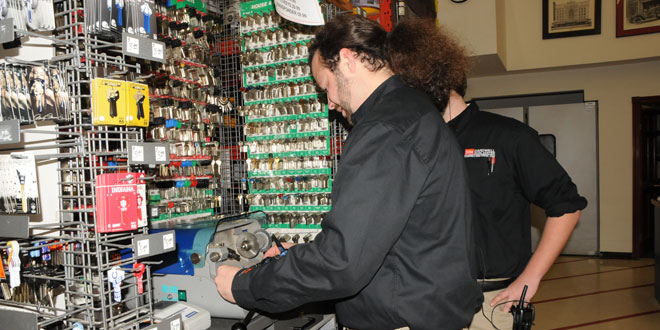This is the fourth in Hardware Retailing staffer Graeme Haase’s series of posts about three days of training that he completed at Cardwell Do it Best Home Center in Indianapolis. Haase went through this training program to get a firsthand account of how a new sales associate’s training goes and to share his experience and impressions with other retailers. To read the first post in the series, click here. Click here for the second and here for the third. To read more about recruiting and retaining high-quality employees, see our story, “Finders Keepers,” in the January issue of Hardware Retailing magazine.
Over the past 16 months of working at the North American Retail Hardware Association (NRHA), I’ve read and been told countless stories regarding the many hats retailers wear. Whether it’s an owner, manager or sales associate, any employee at a hardware store, home center or lumberyard gains a variety of knowledge, thanks to the many different tasks they perform each day.
Today I was able to experience many of those jobs firsthand. Here’s a timeline detailing how I spent my morning:
7:30 a.m.: I arrived at the store.
7:30 a.m.-8:00 a.m.: I went through aisles to make sure everything was clean and that products were pulled to the front and labels were easily visible.
8:00 a.m.-8:15 a.m.: I started at the back service desk and on floor. I used the computer system, which worked much like the front register (although the back service desk is typically where the contractors go to get their supplies and ask questions).
8:15 a.m.-8:45 a.m.: I helped assistant manger Garret Ritz remove old signage from aisles. This task also helped me become more familiar with the layout of the store.
8:45 a.m.-9:00 a.m.: I learned more about the process of renting out equipment to customers.
9:00 a.m.-9:30 a.m.: I toured the warehouse, where the lumber, shingles, rental equipment, doors and extra store supplies are stored.
9:30 a.m.-10:00 a.m.: I learned to cut a key for the first time! It took just a bit of practice (four keys, to be exact).
10:00 a.m.-10:30 a.m.: I walked through the process of how to locate and mix the correct color of paint the customer wants and how to use the paint shaker. I was explicitly told how to use the shaker so I wouldn’t crush the paint cans (especially if shaking more than one at a time). I paid close attention—I didn’t want to be the one responsible for the big mess that would surely occur if a can got crushed!
10:30 a.m.-11:00 a.m.: I went back over to the warehouse to observe a customer picking up shingles. I was politely told I couldn’t operate the forklift.
11:00 a.m.-11:30 a.m.: I worked on the floor, giving it my best shot to help steer customers in the right direction (and relied on other employees when necessary).
11:30 a.m.: I said my goodbyes and headed out. It was time to get ready for a full day tomorrow.
Being able to lend a hand in a lot of different areas of the business was a great learning tool. Even though it may not have been the exact job I was sent there to do that day, it allowed me to pick up knowledge in different departments of the store that I may have not otherwise been exposed to. In return, that prepared me to answer the various questions customers had.
 Hardware Retailing The Industry's Source for Insights and Information
Hardware Retailing The Industry's Source for Insights and Information








